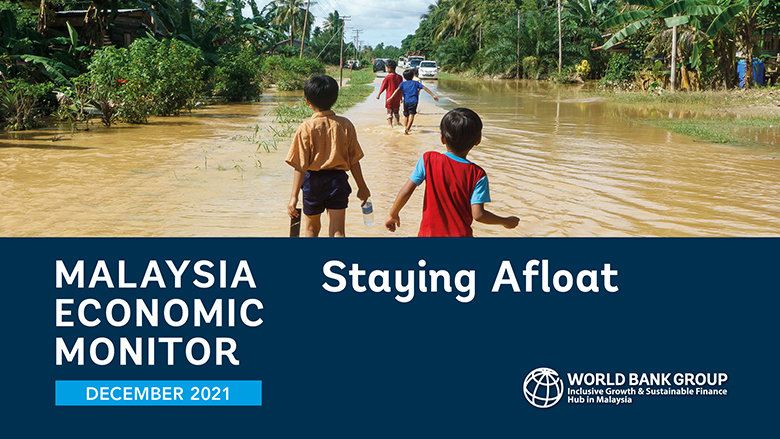Malaysia is gradually emerging from the worst wave of the pandemic, with the economy expected to be on the recovery path in 2022.
- Daily new infections are on the downward trend, largely a result of the country’s high vaccination rates.
- A rebound in domestic demand and expanding exports is expected to fuel projected growth of 5.8 percent in 2022.
The country’s projected recovery path ahead still faces downside risks from global uncertainties around the pandemic, supply disruptions and diminished macroeconomic support.
- Global growth is projected to decelerate to 4.3 percent in 2022 (5.6 percent in 2021).
- Headline unemployment rates remain at 4.5 percent for the country but youth unemployment (15-25 age group) remains high at 11 percent. Underemployment similarly remains elevated highlighting structural issues such as skills mismatches.
- Possible resurgence in Covid-19 infections in light of new variants could further dampen global and domestic recovery paths.
- Rising vulnerability among both households and firms pose further concerns to future recovery.
- The fiscal deficit is expected to widen to 6.5 percent in 2021 following an upward revision in spending by 0.6 percent of GDP, while revenue collection slipped downwards by 0.5 percent of GDP.
- Higher spending has been facilitated by an increase in the debt ceiling to 65 percent in October 2021, but debt service charges are expected to rise further to 18.4 percent in 2022.
Fiscal consolidation will need to be prioritised to ensure effective government spending and revenue collection in the medium-term
- The proposed Fiscal Responsibility Act (FRA) in 2022 provides a timely opportunity to establish such a path for consolidation
- On the revenue front, new tax measures such as the one-off windfall tax, tax on sugar-sweetened beverages and removal of exemptions on foreign income are expected to provide a small impact.
- Rebuilding of fiscal buffers should remain a medium term priority include measures such as a more progressive tax framework and broadening of the tax base.
Immediate priorities, however, should focus on continuing existing support measures, strengthening the health system and improving the breadth and depth of social protection systems.
- These priorities are immediately crucial as the pandemic has exacerbated the challenges faced by Malaysian households, particularly the poor and vulnerable.
- The withdrawal of personal savings and limiting consumption mentioned as the most common coping mechanism during the pandemic. More than half of all households reported lower savings post-pandemic.
- Despite the government programs aimed at assisting households during the pandemic, a third of low-income households still reported not being beneficiaries of these programs.
- Informal employment is also relatively high at 33 percent, and are more prone to income disruptions, further underscoring the need for better social protection.
- Learning outcomes have also been impacted with an estimated 1.3 years of additional learning losses incurred by Malaysian students.
- Learning losses exacerbate the existing learning gaps and inequity present among students.
To address these compounding concerns, short-term measures are needed to support Malaysian households’ recovery
- Continuing existing income relief measures
- Introducing targeted wage subsidies, particularly for women and youth
- Increasing the coverage and adequacy of social insurance programs
- Supporting teachers, schools and district officers with strategies to help students overcome learning difficulties
- Creating remedial interventions to support especially disadvantaged students
- Assessing the current learning losses and making necessary adjustments to mitigate those losses.
